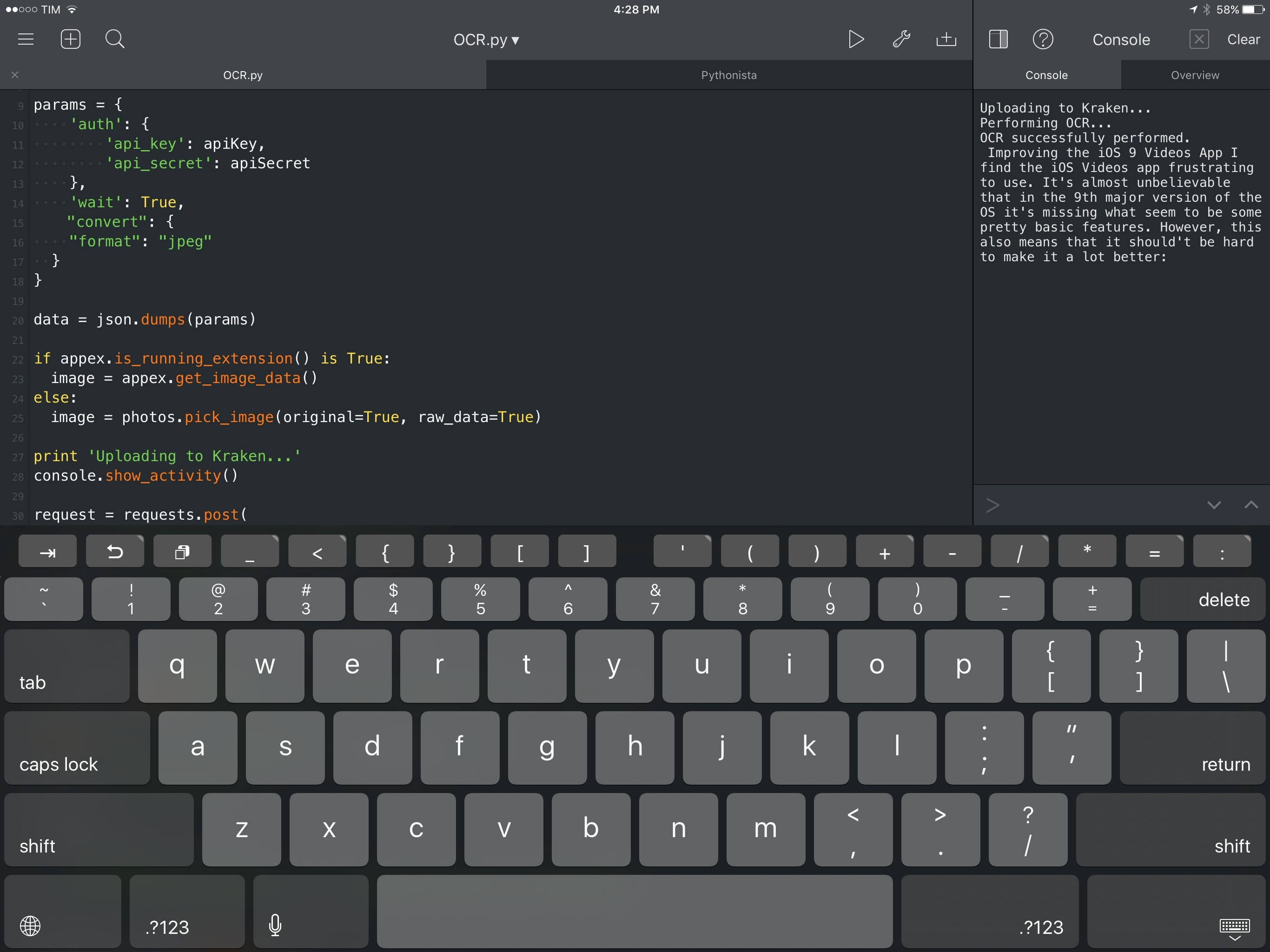For a long time, Apple’s App Store review guidelines prohibited apps from downloading executable code from the Internet. The company’s original stance resulted in IDEs that couldn’t sync scripts and programs across multiple devices – a serious limitation for the emergent movement of programmers embracing the iPad Pro as a portable workstation.
Fortunately, Apple started relaxing their rules earlier this year, allowing “apps designed to teach, develop, or test executable code” to download and run code. Pythonista, the popular Python IDE for iOS (and one of the best pro apps for iOS, period), has been updated this week with the ability to sync scripts with iCloud and edit external scripts in-place using Files’ document picker.
As someone who used Pythonista heavily for years and remembers previous rejections based on old App Store guidelines, this is fantastic news. I moved my existing script library to iCloud, which means all my code is now shared between the iPhone and iPad – no workarounds required. Pythonista now supports the iPhone X and drag and drop for importing scripts, but, even better, the app can open scripts and edit them in-place (saving changes back to the original location) just by opening them with the built-in Files picker. This feature makes it possible to, say, use Pythonista as an editor for script files stored in GitHub repositories and managed by Working Copy – all entirely on iOS, and natively integrated with Files.
Version 3.2 of Pythonista gets rid of the most annoying limitations imposed by the old Apple, another sign that the company’s approach to professional iOS software has changed over the years. While I don’t use Pythonista nearly as much as I did a few years ago (you can imagine why), I plan on playing around with Pythonista 3.2 over the next couple of weeks.







